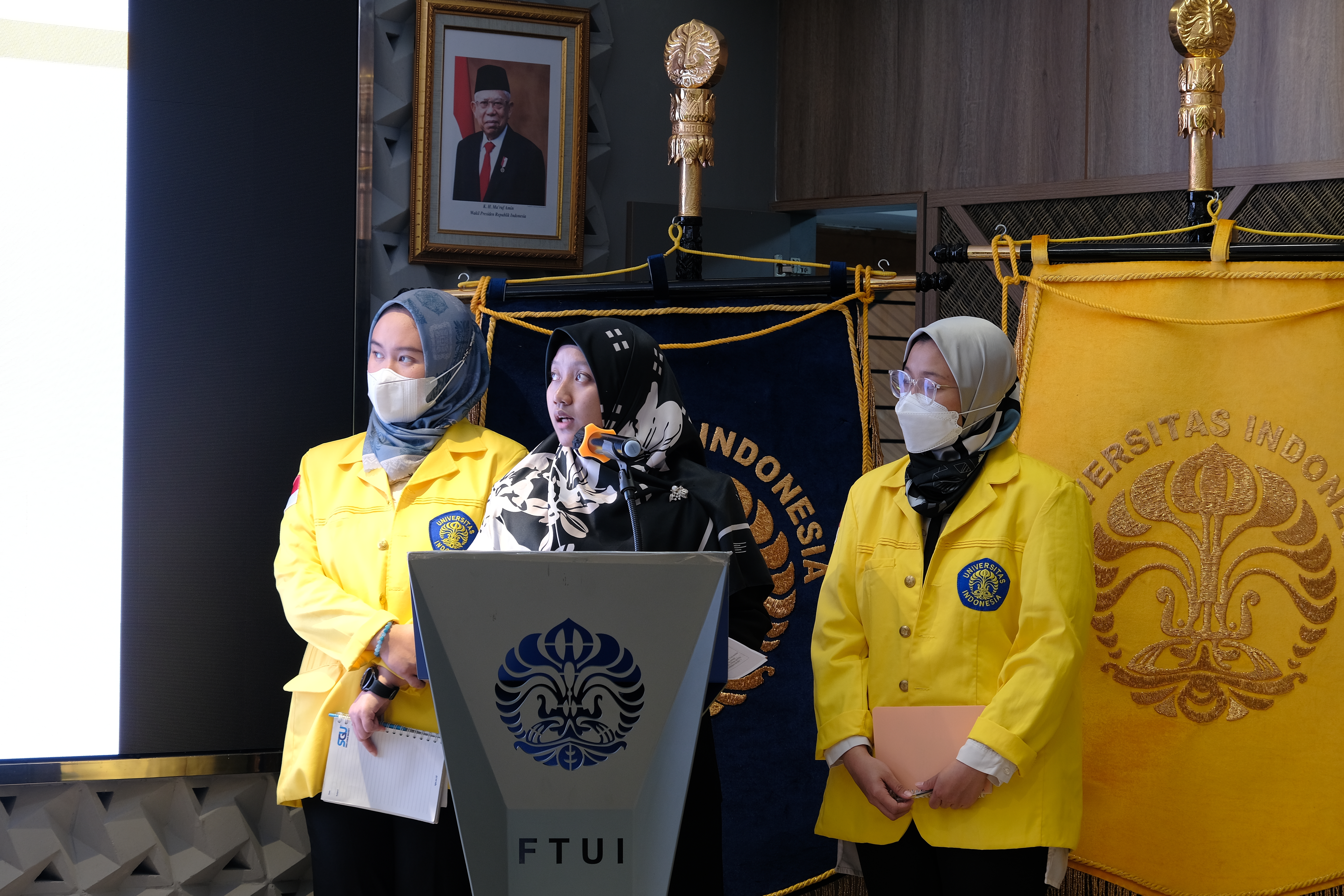Succinic acid, also known as amber acid or butanedioic acid, is the most important chemical compound among other chemical compounds. This is because succinic acid can be widely applied in various industries, such as the food industry, and the agricultural industry, to the metal industry as a flavouring, precursor, surfactant, solvent, and additive. Succinic acid can also synthesize various high-value derivative compounds, such as tetrahydrofuran, adipic acid, 1,4-butanediol, aliphatic esters, and biopolymers.
In general, industrial-scale production of succinic acid is carried out using raw materials in the form of maleic acid or maleic anhydride through a catalytic hydrogenation reaction. However, the production of succinic acid through this hydrogenation reaction has several drawbacks, including high production costs and can cause environmental problems. Also, petrochemical derivative compounds used as raw materials have high prices with diminishing availability. This weakness causes the need for the renewal of methods and raw materials so that the production of succinic acid can be carried out sustainably.
Dwini Nomayulisa Putri raised this issue in her dissertation entitled ‘Modification of Pretreatment and Synthesis Processes for the Production of Succinic Acid from Lignocellulosic-Based Biomass’. In his research, Dwini chose lignocellulosic biomass as an alternative raw material for the production of succinic acid. Several factors to consider in selecting lignocellulosic biomass are its abundant availability and great potential to be converted into sustainable chemicals and fuels, thereby limiting the use of crude oil in the production of biofuels, biomolecules and biomaterials.
“In the production process, succinic acid is produced through a lignocellulosic biomass fermentation process using succinic acid-producing bacteria, such as Actinobacillus succinogenes, Anaerobiospirillum succiniciproduc, Mannheimia succiniciproducens, and Basfia succiniproducens. The use of the fermentation process in producing succinic acid has several advantages, namely lower production costs, more efficient energy requirements, and more environmentally friendly,” explained Dwini.
Dwini carried out the development of a succinic acid production process from lignocellulosic biomass starting from the pretreatment process, hydrolysis, to fermentation. Before entering the fermentation stage, two stages must be passed, namely pretreatment and hydrolysis. The pretreatment process was carried out using a modified pretreatment method with a combination of physical and chemical methods, the hydrolysis process was carried out enzymatically using cellulase enzymes, and the fermentation process was carried out through the Semi Simultaneous Saccharification and Fermentation (SSSF) configuration using the bacteria Actinobacillus succinogenes and Proteus vulgaris.
In the pretreatment process, peracetic acid (AP) and alkaline peroxide (PA) solutions are used sequentially and combined with ultrasonic. From the pretreatment stage, the conditions that produced the highest cellulose content and the lowest lignin content were obtained, namely, pretreatment using AP solution for 3 hours at 35°C followed by pretreatment using PA solution for 10 hours at 35°C with ultrasonic assistance (53 kHz, 90W). The decrease in lignin and increase in cellulose that occurred in OPEFB reached 68.73% and 121.93%, in rice straw by 63.37% and 106.61%, and in bagasse by 30.59% and 67.62%.
The results of the modified pretreatment are then used in the enzymatic hydrolysis process using cellulase enzymes to produce reducing sugars. In the enzymatic hydrolysis process, reducing sugars can be produced optimally under conditions of an enzyme concentration of 5 g/L with a hydrolysis time of 6 hours, a temperature of 50°C and a pH of 5. Under these conditions, the concentration of reducing sugars produced from OPEFB, rice straw, and bagasse was 17.98, 6.47 and 6.30 g/l.
“The next process is fermentation which is carried out through a semi-simultaneous saccharification and fermentation (SSSF) configuration with a pre-hydrolysis stage for 6 hours and simultaneous saccharification and fermentation (SSF) for 48 hours at 37°C using Actinobacillus succinogenes or Proteus vulgaris bacteria. The highest concentrations of succinic acid produced from OPEFB biomass, rice straw and bagasse were 2.31, 3.64 and 5.1 g/L,” Dwini continued in her dissertation presentation.
From this study, Dwini showed that the SSSF configuration was able to increase the concentration of succinic acid up to 26% compared to the SSF configuration. This kinetics study shows that the logistic model can describe the kinetics of bacterial cell growth well, while the kinetics of product formation can be well described using the modified logistic model and the kinetics of substrate use can be well described with the modified Gompertz model.
“With the amount of lignocellulosic biomass waste which is very abundant, both in Indonesia and globally, and is renewable, of course, it can reduce raw material costs, so it is hoped that a biorefinery industry can be created to produce succinic acid which is more economical and sustainable,” said Prof. Dr. Heri Hermansyah, ST., M.Eng., IPU., Dean of the UI Faculty of Engineering.
A research dissertation on the production of succinic acid from lignocellulosic biomass led Dwini Nomayulisa Putri to earn her doctorate with a GPA of 3.97 on 20 February 2022. Dwini is listed as the 65th doctoral graduate of the Department of Chemical Engineering and the 497th graduate of the Faculty of Engineering, Universitas Indonesia. In addition, Dwini was also one of the recipients of the Masters to Doctoral Education Scholarship for Superior Undergraduates (PMDSU) batch III in 2017. The Promotion Session was chaired by Prof. Ir. Mahmud Sudibandriyo, M.Sc., Ph.D. with promoter Prof. Dr. Heri Hermansyah, S.T., M.T., IPU. and co-promoter Dr. Eng. Muhamad Sahlan, S.St., M.Eng. While the testing team consisted of Dr. Tania Surya Utami, S.T., M.T.; Dr. Kenny Lischer, S.T., M.T.; Apriliana C. Khayrani, S.T.P., M. Eng., Ph.D.; Dr. H. Rudi Hartono, S.T., M.T., IPM .; and Dr. Andi Nuraliyah, S.T., M.T.
***
Bureau of Public Communications
Faculty of Engineering, Universitas Indonesia

